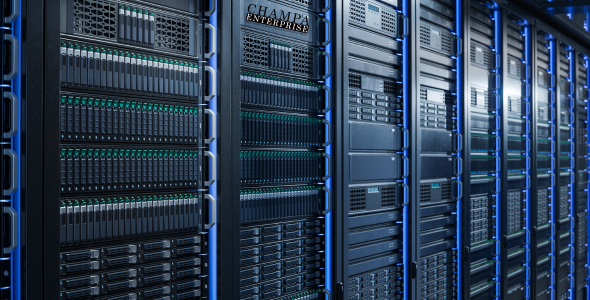info@champait.com
+85621 262442

Datacenter storage systems refer to the infrastructure components and technologies used to store, manage, and access data within a datacenter environment. These systems are essential for housing vast amounts of digital information and providing high-performance storage solutions to support various applications, workloads, and business requirements.
Key components and considerations of datacenter storage systems include:
Storage Arrays: Storage arrays are hardware systems that consist of multiple disk drives organized into storage units or shelves. They typically use RAID (Redundant Array of Independent Disks) configurations to provide redundancy, fault tolerance, and performance optimization.
Storage Area Networks (SANs): SANs are high-speed, specialized networks that interconnect servers and storage devices, allowing them to access shared storage resources over Fibre Channel, Fibre Channel over Ethernet (FCoE), or iSCSI (Internet Small Computer System Interface) protocols. SANs provide centralized storage management and enable features such as storage virtualization, thin provisioning, and snapshots.
Network-Attached Storage (NAS): NAS systems are dedicated file servers that provide file-level storage access to clients over standard network protocols such as NFS (Network File System) or SMB (Server Message Block). NAS devices are typically used for storing and sharing files, documents, and media content across a network.
Storage Virtualization: Storage virtualization technologies abstract physical storage resources from the underlying hardware, allowing administrators to pool and manage storage resources from multiple storage arrays or vendors as a single logical entity. This enables greater flexibility, scalability, and efficiency in storage management.
Flash Storage: Flash storage technologies, such as solid-state drives (SSDs) and flash-based storage arrays, offer high-performance, low-latency storage solutions that are ideal for demanding workloads such as databases, virtualization, and analytics. Flash storage provides faster data access and reduced power consumption compared to traditional spinning hard disk drives (HDDs).
Object Storage: Object storage systems organize data as objects rather than files or blocks, making them well-suited for storing unstructured data such as images, videos, and documents. Object storage offers scalability, durability, and geo-distribution capabilities, making it ideal for cloud storage and content distribution applications.
Data Protection and Disaster Recovery: Datacenter storage systems include features and mechanisms for data protection and disaster recovery, such as backup and restore capabilities, replication, snapshotting, and remote mirroring. These features ensure data integrity, availability, and resilience in the event of hardware failures, data corruption, or natural disasters.
Storage Management Software: Storage management software solutions provide tools and functionalities for provisioning, monitoring, optimizing, and automating storage resources and operations within the datacenter. These tools help administrators streamline storage management tasks, optimize storage utilization, and ensure compliance with data management policies and regulations.
Overall, datacenter storage systems play a critical role in modern IT infrastructure, enabling organizations to store, protect, and manage their data assets effectively to support business operations, innovation, and growth.
